Filter by

Climate change and the oil industry Common problem, different strategies
Multinational corporations are not merely the problem in environmental concerns, but could also be part of the solution. The oil industry and climate change provide the clearest example of how the two are linked; what is less well-known is how the industry is responding to these concerns. This volume presents a detailed study of the climate strategies of ExxonMobil, Shell and Statoil. With an i…
- Edition
- -
- ISBN/ISSN
- 9780719065583
- Collation
- -
- Series Title
- -
- Call Number
- -

What Works in Conservation 2018
What are the best means of reducing illegal hunting of primates? Does changing the type of livestock benefit heathland vegetation? Does removing the upper layer of peat enhance peatland restoration? Is flame treatment effective for dealing with invasive floating pennywort? What Works in Conservation has been created to provide practitioners with answers to these and many other questions about p…
- Edition
- -
- ISBN/ISSN
- 9781783744305
- Collation
- -
- Series Title
- -
- Call Number
- -
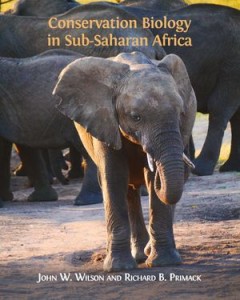
Conservation Biology in Sub-Saharan Africa
Conservation Biology in Sub-Saharan Africa comprehensively explores the challenges and potential solutions to key conservation issues in Sub-Saharan Africa. Easy to read, this lucid and accessible textbook includes fifteen chapters that cover a full range of conservation topics, including threats to biodiversity, environmental laws, and protected areas management, as well as related topics such…
- Edition
- -
- ISBN/ISSN
- 9781783747528
- Collation
- -
- Series Title
- -
- Call Number
- -
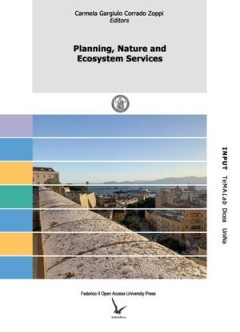
Planning, Nature and Ecosystem Services
This book collects the papers presented at INPUT aCAdemy 2019, a special edition of the INPUT Conference hosted by the Department of Civil and Environmental Engineering, and Architecture (DICAAR) of the University of Cagliari. INPUT aCAdemy Conference will focus on contemporary planning issues with particular attention to ecosystem services, green and blue infrastructure and governance and mana…
- Edition
- -
- ISBN/ISSN
- 9788868870546
- Collation
- -
- Series Title
- -
- Call Number
- -
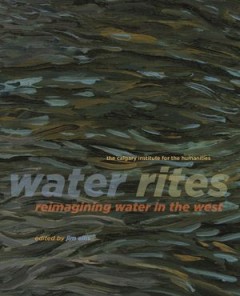
Water Rites Reimagining Water in the West
What are the challenges surrounding water in Western Canada? What are our rights to water? Does water itself have rights? Water Rites: Reimagining Water in the West documents the many ways that water flows through our lives, connecting the humans, animals, and plants that all depend on this precious and endangered resource. Essays from scholars, activists, environmentalists, and human rights ad…
- Edition
- -
- ISBN/ISSN
- 9781552389980
- Collation
- -
- Series Title
- -
- Call Number
- -

Reading the Entrails An Alberta Ecohistory
Before the fall of Imperial Rome, priests cast the guts of sacrificial animals on the temple floor, claiming to be able to divine the future from these entrails. By probing the remains of Alberta’s past sacrifices (reading the entrails), the author believes we might dimly see an apparition of Alberta’s future. This controversial book vividly portrays the history of land and life in Alberta …
- Edition
- -
- ISBN/ISSN
- 9781552386712
- Collation
- -
- Series Title
- -
- Call Number
- -

Ice Blink Navigating Northern Environmental History
Northern Canada’s distinctive landscapes, its complex social relations and the contested place of the North in contemporary political, military, scientific and economic affairs have fueled recent scholarly discussion. At the same time, both the media and the wider public have shown increasing interest in the region. This timely volume extends our understanding of the environmental history of …
- Edition
- -
- ISBN/ISSN
- 9781552388556
- Collation
- -
- Series Title
- -
- Call Number
- -

Environmental Activism on the Ground
Environmental Activism on the Ground draws upon a wide range of interdisciplinary scholarship to examine small scale, local environmental activism, paying particular attention to Indigenous experiences. It illuminates the questions that are central to the ongoing evolution of the environmental movement while reappraising the history and character of late twentieth and early twenty-first environ…
- Edition
- -
- ISBN/ISSN
- 9781773850054
- Collation
- -
- Series Title
- -
- Call Number
- -
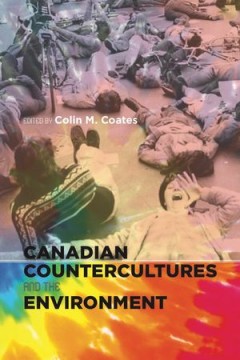
Canadian Countercultures and the Environment
Studies of the radical environmental politics of the 1960s have tended to downplay the extent to which much of that countercultural intellectual and social ferment continued into the 1970s and 1980s. Canadian Countercultures and the Environment adds to our knowledge of this understudied period. This collection contributes a sustained analysis of the beginning of major environmental debates in t…
- Edition
- -
- ISBN/ISSN
- 9781552388150
- Collation
- -
- Series Title
- -
- Call Number
- -
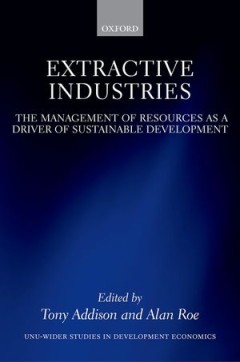
Extractive Industries
New initiatives recognize that resource wealth can provide a means, when properly used, for poorer nations to decisively break with poverty by diversifying economies and funding development spending. Extractive Industries: The Management of Resources as a Driver of Sustainable Development explores the challenges and opportunities facing developing countries in using oil, gas, and mining to achi…
- Edition
- -
- ISBN/ISSN
- 9780198817369
- Collation
- -
- Series Title
- -
- Call Number
- -
 Computer Science, Information & General Works
Computer Science, Information & General Works  Philosophy & Psychology
Philosophy & Psychology  Religion
Religion  Social Sciences
Social Sciences  Language
Language  Pure Science
Pure Science  Applied Sciences
Applied Sciences  Art & Recreation
Art & Recreation  Literature
Literature  History & Geography
History & Geography